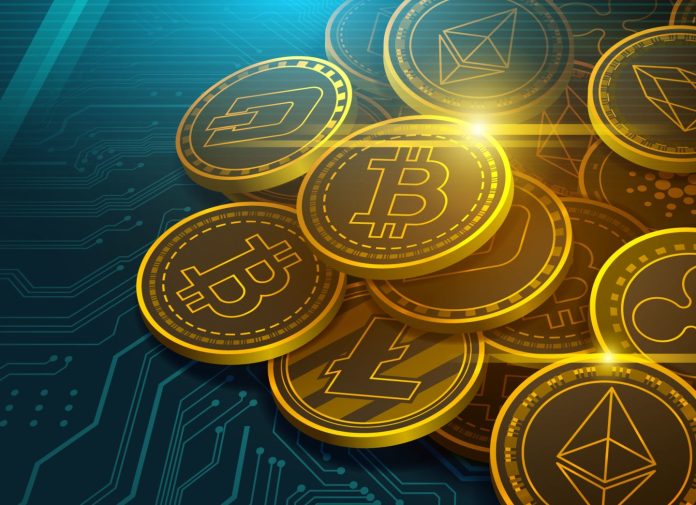Cryptocurrencies are one of the trending talks in the fintech world today. It is a distributed network that provides security, immutability, traceability, and transparency. This makes it ideal for use cases that conventional infrastructure now finds challenging to support.
However, the increasing popularity enabled several reputable exchange platforms like the bitcoin circuit and Crypto communities to get established all over the digital world.
The price of one bitcoin peaked at $69,000 in November 2021, and since then, it has undoubtedly become the most intriguing invention of the twenty-first century.
In this article, we shall talk about multiple incidents that gave Cryptocurrencies the shape we are looking at today!
The Pre-Bitcoin Era
When American cryptographer David Chaum released a conference paper explaining an early type of anonymous cryptographic electronic money in 1983, the concept of cryptocurrencies first came to light.
The idea was to create a kind of money that could be distributed anonymously without the need for centralized organizations (i.e., banks). Based on his original concepts, Chaum created the proto-cryptocurrency Digicash in 1995.
Before money could be delivered to a destination, it needed certain encryption keys and used software to withdraw money from a bank.
Nick Szabo created Bit Gold in 1998, frequently seen as a direct forerunner to Bitcoin. Participants had to devote computer resources to solving cryptographic challenges, and those that did so were rewarded. It creates something that closely resembles Bitcoin when combined with Chaum’s work.
However, Szabo could address the infamous double-spending problem without the assistance of a centralized authority (digital data may be copied and pasted).
As a result, it took another 10 years before an unidentified person or group operating under the cognomen Satoshi Nakamoto released a white paper. This was titled “Bitcoin – A Peer to Peer Electronic Cash System,” which served as the catalyst for the creation of Bitcoin and other cryptocurrencies.
Bitcoin’s Beginning
The official white paper on the design of Bitcoin was released on metzdowd.com on Halloween, October 31, 2008. The eight-page summary explains how this new Bitcoin creation has resolved problems with double spending and the Byzantine General’s Theory, which had been unanswered for years.
According to Andreas Antonopoulos, it is the finest study paper he has ever seen. It describes how Bitcoin is more than money; it is a cutting-edge technology that will revolutionize society. On January 3, 2009, Block 0 was mined, marking the formal creation of Bitcoin.
Even the most intelligent among us find it difficult to bring about such a “technological tour de force,” as Microsoft founder Bill Gates famously described Bitcoin. Nevertheless, the Bitcoin jigsaw that leads up to this point has several minor components.
The most enigmatic aspect of Bitcoin’s early history is Satoshi Nakamoto, who has only been identified by a few email communications sent to individuals like Hall Finney and Mike Hearn (definitely not Newsweek).
Although the creation of Bitcoin was allegedly started in 2007, actual work only occurred in August 2008, when Neal Kin, Vladimir Oksman, and Charles Bry applied for an encryption patent.
Despite certain similarities to the upcoming Bitcoin product, there has yet to be a clear relationship between Bitcoin and Nakamoto. But, of course, this wouldn’t be important if the domain bitcoin.org had been registered anonymously three days later.
Hal Finney- The First Transaction
Hal Finney is renowned for having provided this cryptocurrency with the earliest support. Finney was a steadfast supporter of the project after Satoshi released the Whitepaper; in fact, the available proof amply demonstrates that he was the first person after Satoshi to download and run the Bitcoin client.
In the first bitcoin transaction, which happened on January 12, 2009, he got ten bitcoins from Satoshi. In the initial year of Bitcoin’s existence, I exchanged several emails with Satoshi to fix coding bugs.
He revealed that he had ALS in a letter titled “Dying outdoors,” published on October 5, 2009. However, he never stopped programming or working on Bitcoin despite his illness.
Hal Finney’s well-known public letter, “Bitcoin and Me,” which served as his final post and farewell, highlighted his feelings and ideas about his experience with Bitcoin for the tale.
He died on August 28, 2014, and the Alcor Life Extension Foundation cryopreserved him. Hal Finney was admitted to Alcor as patient number 128 by Ralph C. Merkle.
Since 1998, he has become a director. Bitcoin contributions from his followers partially financed his cryogenic lethargy.
The First Purchase
The most well-known event in Bitcoin history was the first retail transaction on May 22, 2010. The pizza cost about $25 whens purchased. So it seemed a wonderful deal to exchange two genuine pizzas for 10,000 units of unidentified computer code.
There are several firsts for Bitcoin in 2010, including the first escrow transaction (on October 16) and the first transaction using a mobile device (December 8). In addition, on November 6, when each bitcoin was worth about $0.50, the total value of Bitcoin surpassed $1 million for the first time.





